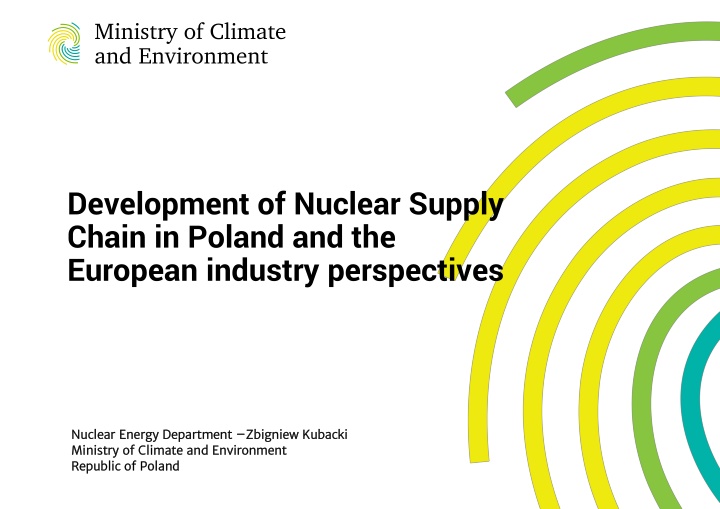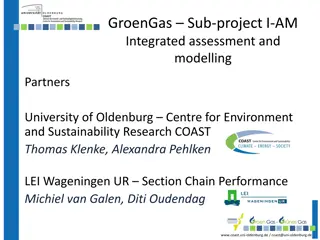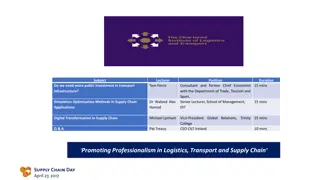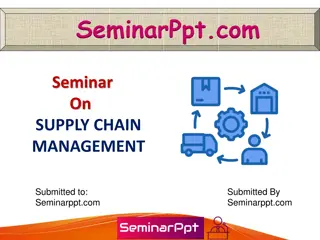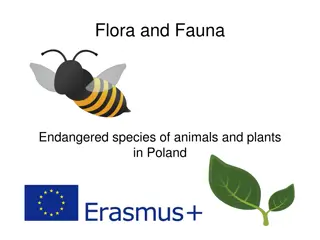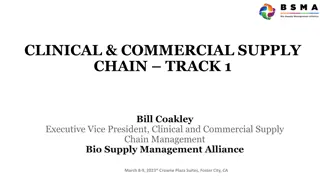Developments in Poland's Nuclear Supply Chain and European Industry Perspectives
Exploration of Poland's Nuclear Power Programme, highlighting objectives, updates, and local content initiatives. Emphasis on the potential growth of the nuclear supply chain in Poland, with insights into the European industrial sector's opportunities, challenges, and cooperation prospects. Analysis of Polish industry's capabilities and experiences in nuclear projects globally.
Download Presentation

Please find below an Image/Link to download the presentation.
The content on the website is provided AS IS for your information and personal use only. It may not be sold, licensed, or shared on other websites without obtaining consent from the author.If you encounter any issues during the download, it is possible that the publisher has removed the file from their server.
You are allowed to download the files provided on this website for personal or commercial use, subject to the condition that they are used lawfully. All files are the property of their respective owners.
The content on the website is provided AS IS for your information and personal use only. It may not be sold, licensed, or shared on other websites without obtaining consent from the author.
E N D
Presentation Transcript
Development of Nuclear Supply Chain in Poland and the European industry perspectives Nuclear Nuclear Energy Ministry Ministry of Republic of Poland Republic of Poland Energy Department Department Zbigniew Kubacki of Climate Climate and Environment and Environment Zbigniew Kubacki
Agreement among EU states on creation of an industrial sector: is cooperation possible? Contents 1/ Poland Nuclear Programme Development of Nuclear Supply Chain 2/ Perspectives of the European nuclear industrial sector opportunities, challenges, barriers 3/ Final remarks October, 13-14.2021
Objective of the Polish Nuclear Power Programme* To build 6 - 9 GW of installed nuclear power capacity based on large, proven PWR reactors *update of PNNP was approved by the Polish Government in 2020 October 13-14, 2021
Polish Nuclear Power Programme What is new in the update of PNPP: First nuclear installation 1-1,5 GW until 2033 6 nuclear units till 2043 (target 6-9 GW) in the same technology (proven technology, gen. III/III+, PWR) Proposed new business and operational model Bigger role of State in the Programme Active role of the empowered Regulator Important role of local content/supply chain development October 13-14, 2021
Objective of the Polish Nuclear Power Programme Local content and nuclear supply chain Gap analysis results conducted by the Ministry of Cli in 2021: 79 Polish companies with nuclear experience in past 10 years (for NPP and fuel cycle facilities, nuclear laboratories, CERN, ITER, Dubna laboratory, Polish research nuclear reactor Maria, other), Another 250 Polish companies with sufficient capabilities/competencies for nuclear industry. Possible Polish local content: min. 40% of value at the first unit up to 70% at the final stage. Polish industry has sufficient capabilities to deliver most of products/services in BOP and some of T/G components: Civil works, manufacturing and assembly of piping, HVAC and electric components, Some components of NSSS (manufacturing/erection) are in reach but require additional investments in Polish industry. October 13-14, 2021
Objective of the Polish Nuclear Power Programme Local content and nuclear supply chain Experience of the Polish industry in nuclear projects worldwide 3 continents 25 countries 44 NPPs, 2 nuclear laboratories, 2 nuclear facilities Fuel cycle facilities New build, O&M projects Life time extension, decommissioning projects Products/services delivered to most EU NPPs (and other nuclear facilities) Some other NPP with Polish involvement (NPP in Ukraine, Belarus, Turkey, Russia, Canada, Mexico, Japan, India, China, USA) Well established supply chain of global nuclear partners (ABB, EDF, GE, Hitachi, Rosatom, Schneider Electric, Siemens, Westinghouse and other nuclear customers - Tier 3,4,5 according to WNA). October 13-14, 2021
Current EU Environment for nuclear industry: Polish perspective One of the main obstacles in the development of the nuclear industry is the lack of level- playing field among zero and low-emission technologies. This is also true at the global level, when the contribution of nuclear power to fighting climate change is not recognized within the global climate negotiations and subsequent agreements. Today, it is difficult to move forward with activities with a nucleartag on. Financing of nuclear new build remains a challenge due to high demand for capital and sensitivity to conditions of acquiring the necessary funds. This obstacle is shared by other large investment projects in the energy sector, like offshore wind farms, but nuclear power has no access to incentives enjoyed by renewable projects. While renewable technologies benefit from broad support mechanisms, a vast majority of EU policies and funding excludes nuclear power from its scope. October 13-14, 2021
Remarks on the EU regulatory and industrial policy There is a need for a stable EU policy framework, which encourages investment in all low- carbon technologies, including nuclear power, Nuclear power should be recognised as an industrial sector, indispensable for net zero transition and long term strategy should be adopted based on Art. I of the Euratom Treaty, There is a need for support for R&D and innovation and increase funding for research into both current and future nuclear technologies, Harmonization and standardization for nuclear projects and technologies is needed on the European and global market for development of cooperation between EU companies and investors, Closer regulatory cooperation between European regulatory and supervisory agencies is needed, especially in the field of modern emerging technologies. Commission should allow Member States to choose their own low-carbon energy mix. Commission should adopt a technology-neutral approach. October 13-14, 2021 Ensure a stable, coherent & consistent policy environment
Conclusion In Poland, nuclear power will contribute to the creation of a new, innovative industry branch with a high degree of technological advancement. The construction of the nuclear power plant can be carried out by Polish companies by up to 70% of the project value. It is estimated that by 2040, nuclear power implementation will generate from 25 to 38 thousand highly qualify new jobs, which will contribute to new specializations and technological development. Governments interested in nuclear power should work jointly and create pro-nuclear alliance to balance antinuclear policy within EU and to overcome the current barriers hindering the development of new nuclear power projects and actively engage in their development and execution. The decisions on the exclusion of nuclear power from taxonomy are political rather than scientific - approach which should be avoided at all cost. We should strive to depoliticise the decision on EU taxonomy by referring to the JRC report and by following a science- based approach . Governments and EU institutions should also support the extension of applicability of nuclear power beyond electricity generation in the fields such as hydrogen production and heat generation. Nuclear power should be included in the global climate negotiations. The ground for this should be set during the approaching COP 26. October 13-14, 2021
